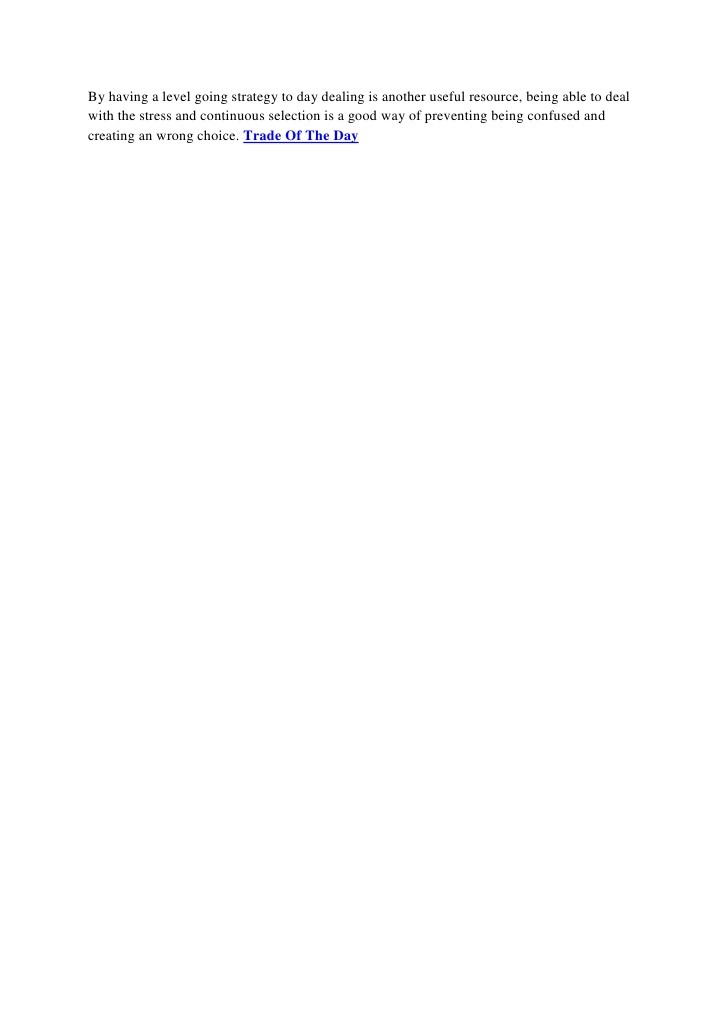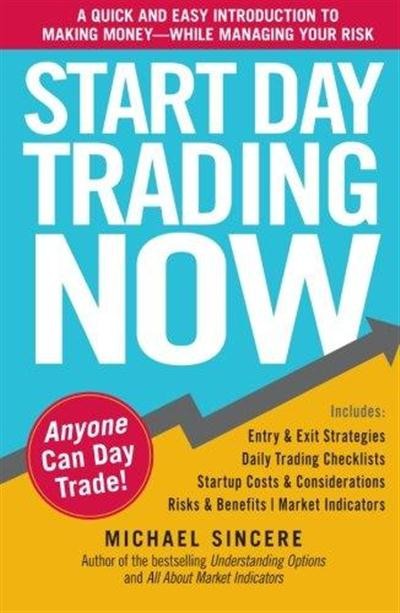Introduction to Daytrading
Post on: 10 Апрель, 2015 No Comment

What is Daytrading, what types of daytrading are there, and what is swing trading?
By definition, daytrading means that you try to make money on daily price movements of stocks in the stock market every day. Whether you trade every minute or hour, daytrading is very short-term in duration. Some people trade for 1/8 and 1/4 points while others try to make money every one to five days. We at daytrader1.com actively daytrade this latter time frame and have suggested this to traders starting out. It is a much easier way to learn how to daytrade successfully. Anything more than a one day time frame but within ten trading days is usually call swing trading.
Why do people daytrade or swing trade?
The stock market has grown much more volatile now due to the huge growth experienced by technology and internet companies. Every day, companies like GOOG, BIDU, YHOO, NVDA, RIMM, AMZN, LULU, etc. have the potential to rise or fall by five to ten percent in one to several days. Buying 20 shares of GOOG at $571.74 on Oct 1, 2007 and selling it the next day at $596.74 would have yielded $500 or a 4.4% return in one day. And 20 shares at $571.74 is only $11,434.80 and at 30% margin, the trade would require original capital of under $3500. Profits are enormous but if you are on the wrong side, so are the losses!
How Much Money I need to put in Each Position to Trade the Markets Aggressively?
Trading aggressively means that you are using 100% of this money to trade every day. If you have $100,000 and you set aside $20,000 to trade aggressively, this $20,000 is totally used up to trade. This amount is turned over many times during the month and both options and margin accounts* could also be utilized, (more on this below).
How much should I use to trade the markets if all my monies are currently at a major bank and I do not want to risk everything?
Lets say you have $100,000 dollars in a financial institution and it is earning 4% in money markets. So at the end of one year, you would have $4,000 in interest. Not a lot for leaving $100,000, especially after tax! And because the experts are saying that the markets are high, you hesitate to put your money there. So what are you supposed to do? One way to solve this problem is to take 20% of your funds and trade the market aggressively with this smaller portion while leaving the remaining 80% in money market. If you can make a 25% return from 20% of your portfolio, you will generate a total return of 8.20%. A 20% portion of $100,000 equals $20,000. A 25% return here would equal $5,000. Add this $5,000 to $3,200, (which is 4% of the remaining $80,000), and you get $8,200 or 8.20%, which is not bad in any year and is over twice of what you would have earned on interest had you left it alone. This is a very conservative strategy and for accepting a higher amount of risk on a smaller percent of ones portfolio, larger total returns could be generated.
What is the optimal percentage for any position?

- For over 100,000, the maximum per position is between 5 to 10% with a median of 7%. Going over 10% no matter how good it looks increases your risk dramatically.
- Between 50,000 to 100,000, the maximum is still 10% but the median increases to 10%. In other words, most trades approaches the 10% level quite fast.
- Between 20,000 to 50,000, you have to accept greater risk if you are to trade aggressively. You will try to have at least 50 to 100 shares of any trade. Fifty shares over $100.00, seventy-five shares between $50.00 and $100.00, and 100 shares under $50.00. This way, you could have two to three positions at any one time. Try to keep them in multiples of 25.
- Margin accounts*, (maximum at 50%), and deep in the money options could augment the percentages at this level and the maximum per position is around 20%. Deep in the money options, with little time value, is actually a proxy for the underlying stock.
- Under 20,000, you are basically at ground zero and would be augmented with the use of margin, (again maximum at 50% and not 70%), and also deep in the money options. The risks are much greater here due to large percentages per position but if the margin is managed correctly, the portfolio will grow accordingly. At $20,000 we would max out any one position at 35% while at $10,000, our max would be at 50%. An example of $10,000 in a cash account would let one buy about 50 shares of AOL and also 50 HWP or 100 shares of AOL and 100 HWP in a margin account, or any possibilities with the combination of options. The most serious risk with options is that you cant get stopped out properly and an additional 25% loss of the option price is possible from any option stop loss due to the bid and ask spread. It is due to the fact that deep-in-the-money options are at times quite illiquid.
As you can see, the risks are a lot higher at lower capital levels but as long as you stick to these parameters, your chances of success have increased.
*Margin is the borrowed money from the brokerage firm you deal with. A quick definition is when you buy a $10 stock on margin, you have to put up half, (50% margin), or $5. If the stock falls to $6, you have to put up half of this unrealized loss which is half of $4 or $2. This brings your account to $7, (original $5 plus this additional $2), and the value of your stock is now at $6. If this stock subsequently drops to 0, you would have to pay again for half of this last $6 loss, or another $3. This brings your account to $10, (original $5, plus half of the first loss of $2, plus half of the final decline from $6 to zero which is $3), with the stock now at zero. Now you have fully paid for a stock and the brokerage house has received all their money. This is how margin works so if you are wrong, you will have to put up half of the loss. Or what is known as a margin call.
An option is essential a small percentage payment to use someone elses stock with a right to buy or sell within a limited time frame. The analogy is like leasing a car for a couple of months. You pay a small monthly cost, use the car all you want, and then decide whether you will buy the car or give it back. An example with options would be that it cost $1200 to own 100 shares of IBM for four months at a price of 125. The stock is currently around 125 and any price movement above this price is yours on a hundred shares, (instead of investing $12,500 for a hundred shares, ($125 X 100 shares). This is known as a call option.
So now lets you only have $10,000 and decide to trade on margin at 50%; which would allow you to trade a $20,000 market portfolio. Assume you think that Cisco, Microsoft and Google are ready to move. You would then buy 1/3 in Cisco, 1/3 in Microsoft and 1/3 in Google and that would bring the totals to around $20,000. This would be aggressive trading. You are trading 100% of your portfolio while trying to make a minimum of 10% on each trade within a couple of hours to several days. If each stock rose 10%, your immediately return is 10% within this time frame regardless of how many shares you own. The problem most people have is to put all the money on the least expensive stock, or using the previous example, put everything on Cisco. This only works in strong bull markets but the right way to do it is to have at least $5000 in each position and be a touch diversified even though they are small positions or odd lots. Otherwise it is a one trick pony and if doesnt go your way during the day, all is lost. Always remember that opportunities are present every day but capital isnt if you have lost it. So no matter the amount, capital preservation is paramount along with risk management. One may lose 50% of an investment but just to make the same losses back, that investment would have to gain 100%; and how many investments have made you 100%?














